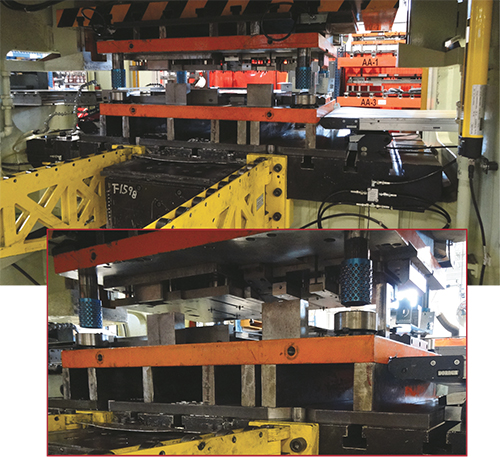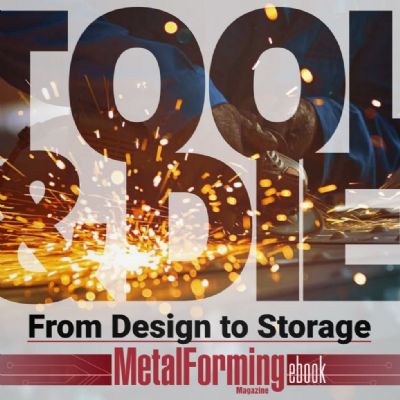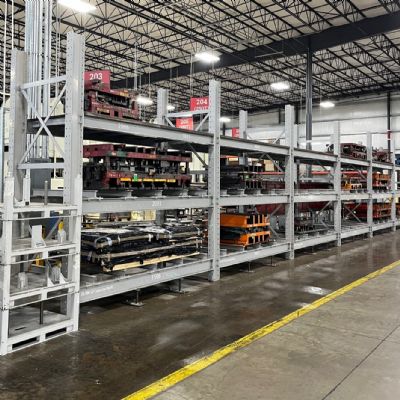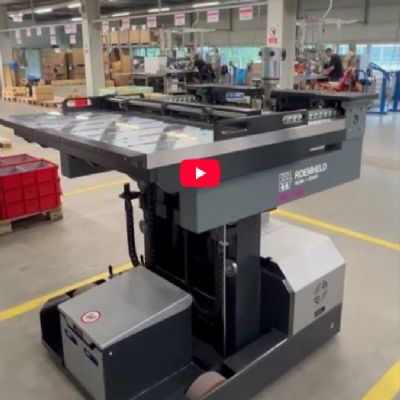MF: What can metalformers expect to spend to outfit a press with QDC apparatus, and what type of return can they expect from their investments?
Klimowicz: Spend per press depends on press size and the weight of the dies. To equip a bigger machine with heavy dies (10,000 to 35,000 lb.) can cost in the neighborhood of $40,000 for clamps, bolster extensions and die lifters. For a standard 500-ton press, we see an average spend of $10,000 to $20,000 on QDC equipment. ROI, meanwhile, often is measured in months, based on the number of times a press is changed over during a typical shift. And, as noted above, shops that do not take the time to standardize on their equipment will only optimize their changeovers on some of their dies, not on all of them. That can extend the ROI from months to years.
MF: What steps can metalformers take to ensure they’re prepared to work with a vendor of QDC equipment?Klimowicz: Whether looking to invest in die clamps, bolster extensions or die lifters/rollers, we recommend that metalformers closely survey the equipment they’re using in their pressrooms. Die weight and die density (ratio of weight to footprint) are critical, so that we can calculate the amount of lifting capacity needed per foot and ensure that the metalformer has sufficient lifting capacity for its applications.
Also, take the time to accurately and precisely measure T-slot dimensions—this is critical and may rule out some of the equipment that commonly is available. Without this information, finding the optimum QDC solution is difficult. A key point: Measure T-slot dimensions to three decimal places, understanding that a “standard” 3⁄4-in. slot is anything but standard. And, when you’re dealing with die lifters, we’re typically only elevating the die 0.070 to 0.080 in. above the bolster surface. So, we need to know the precise depth of the slots. Slot width also is critical—we don’t want more than 0.030 in. of gap between the slot and the lifter.
MF: You note a significant increase in the use of QDC equipment in recent years—do you have any recommendations for first-timers?
Klimowicz: For sure we’ve seen a significant pickup in new business since 2013, as well as returning customers. As the market demands more productivity, metalformers must focus on streamlining their changeovers. This segues into the importance of training —don’t skimp on training. When investing in QDC equipment, take the time to educate employees on how and why it’s used. I’ve seen operators remove some of the equipment because they don’t know how to use it.
Maintenance and care of the QDC equipment also is critical. One all-too-common and poor practice that I’ve witnessed is technicians, during a changeover, removing the clamps from their T-slots and hanging them by their hydraulic lines. Don’t do this—the hose can wear and break within a month or two. Purchase and use clamp holders designed specifically for this purpose. Also, when using bolster extensions, plan accordingly and designate a convenient place to place the extensions so that they don’t get hit by a lift truck or otherwise become damaged. Lastly, a clamp’s hydraulic seals do not last forever. Keep a few spares on hand. A few hundred dollars’ worth of maintenance-and-repair equipment can save thousands of dollars in press downtime. MF
See also: PFA, Inc.
Technologies: Tooling









 Podcast
Podcast

 Video
Video